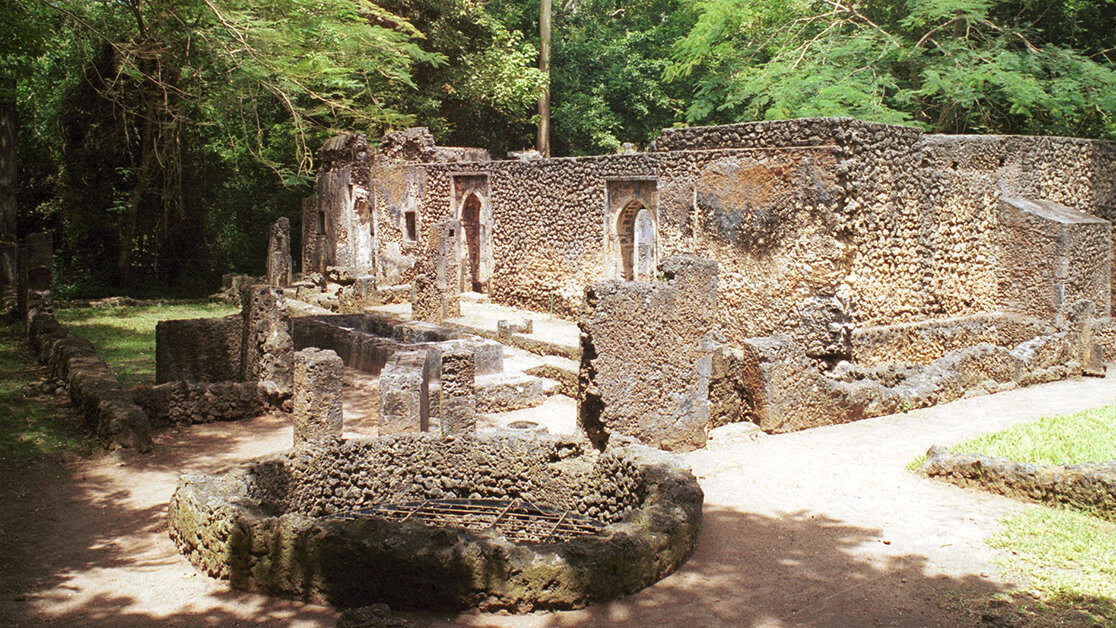Historic Gedi Ruins added to Unesco World Heritage List

Watamu, Kilifi County
The Historic Town and Archaeological Site of Gedi has been officially inscribed on the Unesco World Heritage List, marking a significant cultural milestone for Kenya.
The announcement was made by the United Nations Educational, Scientific and Cultural Organization during the 46th session of the Unesco World Heritage Committee held in New Delhi, India.
The Gedi Ruins, located in Watamu, Kilifi County, are a testament to the rich history and sophisticated architecture of the Swahili civilization that thrived from the 13th to 17th centuries. The site includes a series of stone houses, a palace, and a mosque, all nestled within a lush indigenous forest. This unique blend of natural and cultural heritage reflects the advanced urban planning and intricate coral stone structures characteristic of the Swahili culture.
The National Museums of Kenya (NMK) celebrated this achievement, highlighting the importance of preserving and promoting Kenya’s heritage. The addition of Gedi to the Unesco World Heritage List underscores the site’s historical and cultural significance, as well as NMK’s commitment to conservation efforts.
“Gedi Ruins showcases the architectural brilliance of the Swahili civilization, with intricate coral stone structures and sophisticated water systems,” NMK posted on its X page on July 30, 2024.
Kenya’s permanent delegate to the Unesco, Prof Peter Ngure said that Gedi Ruins is a testimony of organized civilization from the very beginning.
“This recognition is a testament to the outstanding elements of construction techniques and water engineering evident in Gedi,” said Prof Ngure.
He added: “It showcases Kenya’s diverse heritage, offering not only wildlife tourism but also rich cultural experiences.”
Gedi Ruins scientist Hussein Abdullahi, who at the time we contacted him was still in India, promised to give AVDelta News a lengthy interview once he jets back into the country.
“This is historical and we are very happy. I’m in India so please give me time I get to Kenya and we’ll have a lot to discuss about Gede Ruins and Watamu town. I’m not in the best position to speak right now,” said Mr Abdullahi.
In an exclusive interview with AVDelta News, Ms Mwanahamisi Ramadhan, a resident of Kilifi County, exuded confidence that Kenyans, especially residents, will reap benefits following this recognition.
“I believe this designation will undoubtedly boost tourism, thus bringing economic opportunities to us the residents of Watamu and Kilifi County,” Ms Ramadhan said.
The Gedi Ruins is a historical and archaeological site in Kenya’s North Coast near the Indian Ocean.
Founded by the Swahili people, a group of Bantu-speaking people who lived along the East African coast, Gedi village is believed to have been established in the 13th century and flourished until the 17th century.
The town was an important trading port and a center of Islamic learning, facilitating commerce with traders from Arabia, India, and beyond.
The reasons for its eventual abandonment remain a subject of speculation, adding to its mystique.
The site includes a walled town and its outlying area, with standing buildings such as mosques, a palace, and numerous houses made from stone.
Gedi’s architecture and an abundance of imported material culture, including pottery, beads, and coins, provide evidence of the city’s rising prosperity over the course of its occupation. The ruins are also known for their stone “pillar tombs” - a distinctive type of Swahili Coast architecture.
The inscription of Gedi as Kenya’s eighth World Heritage Site is expected to bring international attention to the country’s cultural treasures and further solidify Kenya’s position as a key destination for heritage tourism.
Other heritage sites are Lake Turkana National Parks, Mount Kenya National Park and Forests, Lamu Old Town, Sacred Mijikenda Kaya Forests, Fort Jesus - Mombasa, Kenya Lake System in the Great Rift Valley, and Thimlich Ohinga Archaeological Site.
Unesco is a specialized agency of the United Nations with the aim of promoting world peace and security through international cooperation in education, arts, sciences and culture.
To advertise with us, send an email to advert@avdeltanews.world
